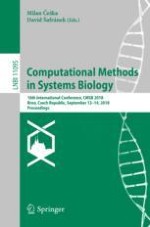2018 | OriginalPaper | Buchkapitel
Computing Diverse Boolean Networks from Phosphoproteomic Time Series Data
verfasst von : Misbah Razzaq, Roland Kaminski, Javier Romero, Torsten Schaub, Jeremie Bourdon, Carito Guziolowski
Erschienen in: Computational Methods in Systems Biology
Aktivieren Sie unsere intelligente Suche, um passende Fachinhalte oder Patente zu finden.
Wählen Sie Textabschnitte aus um mit Künstlicher Intelligenz passenden Patente zu finden. powered by
Markieren Sie Textabschnitte, um KI-gestützt weitere passende Inhalte zu finden. powered by
